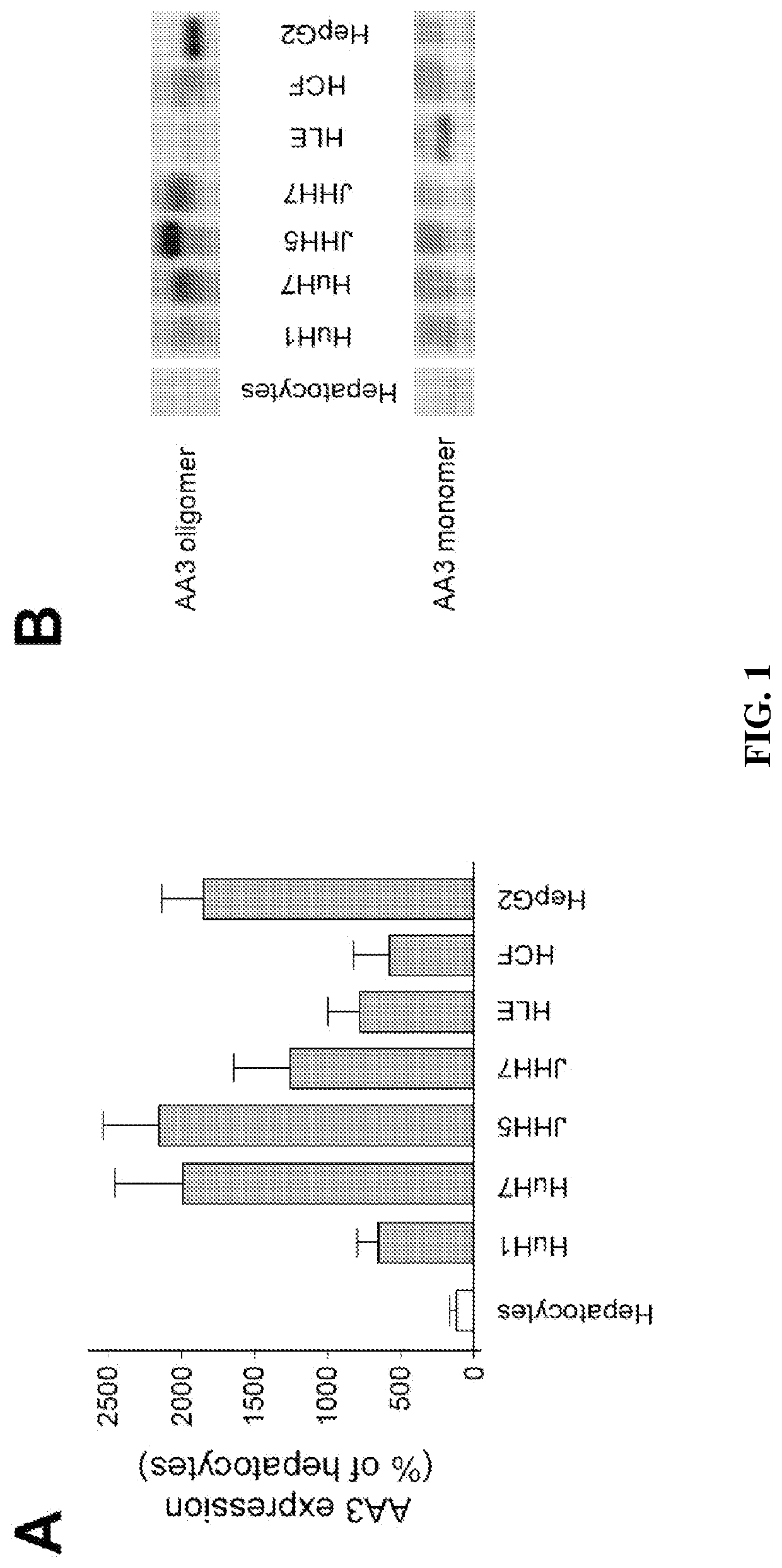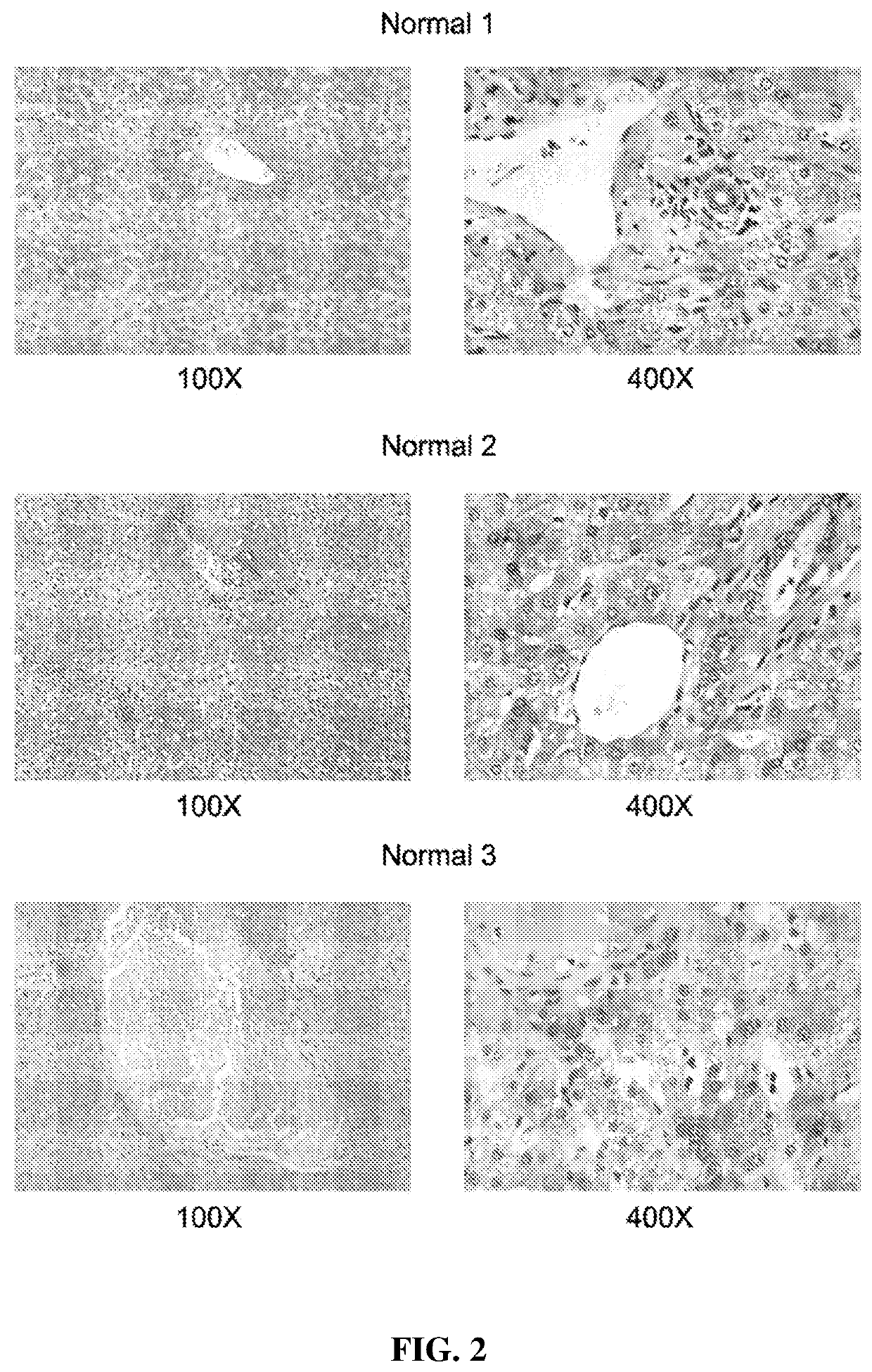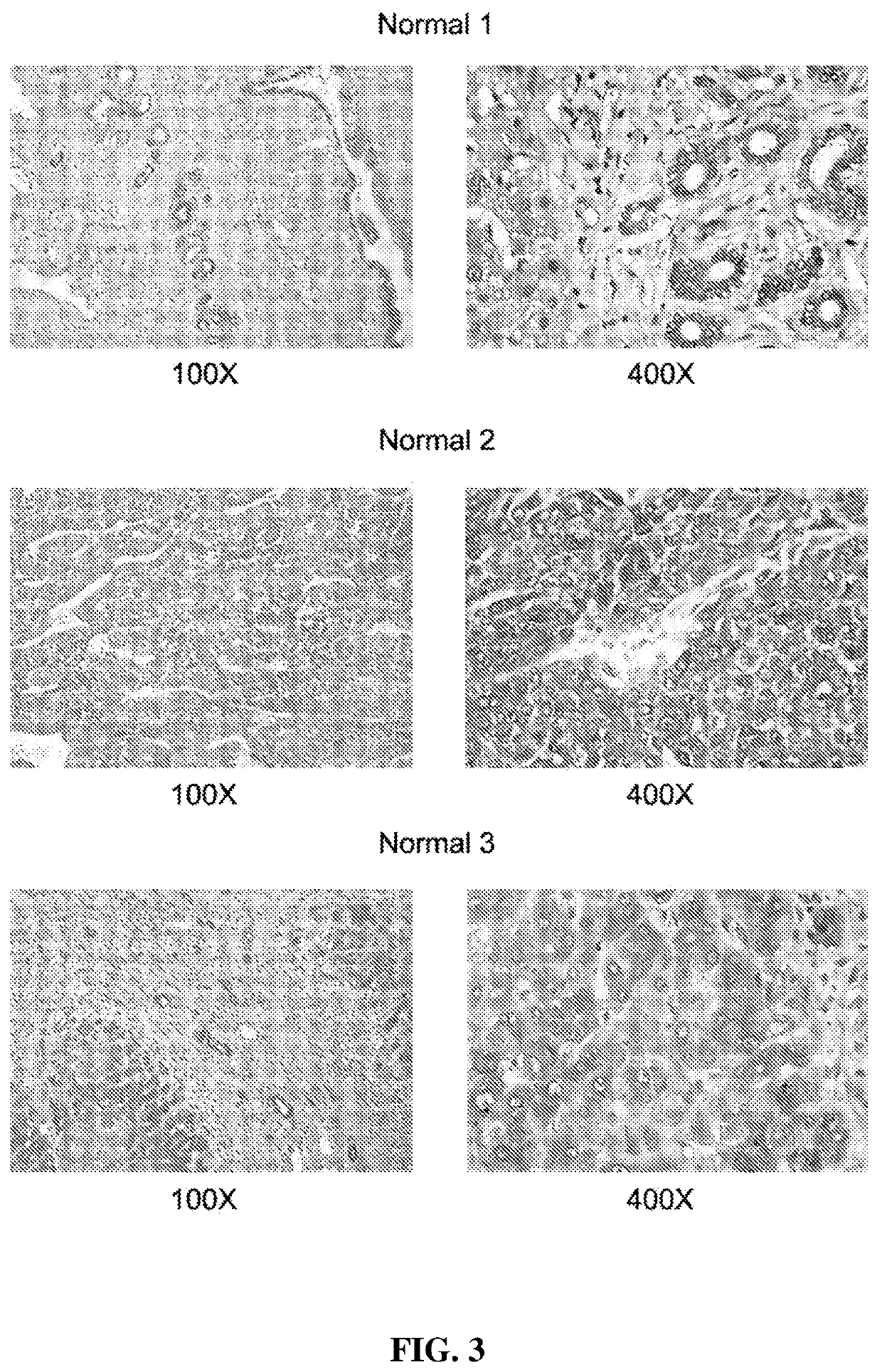Inhibition of aminocylase 3 (AA3) in the treatment of cancer
- Summary
- Abstract
- Description
- Claims
- Application Information
AI Technical Summary
Benefits of technology
Problems solved by technology
Method used
Image
Examples
example 1
n of AA3 in Primary Hepatocytes, HCC Cell Lines, Normal and HCC Livers
[0172]All studied HCC cell lines (HuH1, HuH7, JHH5, JHH7, HLE, HCF and HepG2) expressed AA3 (FIG. 1). AA3 expression in HCC cell lines was 5 to 20 times greater than in normal primary hepatocytes (FIG. 1A). There were two AA3 bands of ˜35 and 90-100 kDa (FIG. 1B). The immunostaining was blocked by pre-incubation of HR-C1 antibody with purified human AA3. The higher mobility band corresponded to the AA3 monomer (˜35 kDa) that has been reported to be expressed in normal mammalian kidney and liver [32, 35-38]. The ˜90-100 kDa band was detected in most HCC cell lines but not in normal hepatocytes (FIG. 1).
[0173]The inventors studied next the protein expression level of AA3 in normal liver and HCC livers. As shown in FIG. 2, AA3 protein is expressed mostly in hepatocytes with weak expression in biliary epithelial cells (FIG. 2). AA3 expression in normal liver was negative (−) to minimal (+) and was moderate (++) to hig...
example 2
tylates NAFC and NAGGC
[0174]Human AA3 efficiently deacetylates NAFC (FIG. 4a-d) and NAGGC (FIG. 4e-h) generating FC and GGC respectively. Kinetic parameters for these substrates (Km: 0.025 and 0.14 mM; kcat: 2 and 7.2 s−1 for NAFC and NAGGC, respectively) are similar to the other AA3 substrates, N-acetylated aromatic amino acids and mercapturic acids [30-33, 38,39].
[0175]AA1 (EC 3.5.1.14), in addition to AA3, has been reported to deacetylate certain mercapturic acids [36], although the substrate specificity of AA1 differed from AA3 [30-33, 39]. Therefore, we determined whether AA1 deacetylates NAFC and NAGGC. In experiments conducted by the inventors, rat AA1 that has high sequence identity with human AA1 did not significantly deacetylate these mercapturates: the specific activity was less than 0.1% of the corresponding value of AA3 and therefore the exact activity value could not be estimated (FIG. 5a).
[0176]Since HCC cell lines express the ˜90-100 kDa form that may change the abil...
example 3
AA3 Inhibitors on FC and NAFC Levels in HCC Cell Lines
[0178]The inventors' data suggest that AA3 deacetylates and therefore decreases the level of NAFC and NAGGC in HCC cells, and conversely AA3 inhibition should increase these levels. Accordingly, we measured NAFC and FC levels in HCC cells before and after treatment with AA3 inhibitors [33]. In untreated HepG2 and HuH7 cell lines, both FC and NAFC were detected; the level of FC in both cell lines was significantly higher than NAFC (FIG. 6). The FC level in HepG2 cells was higher than in HuH7 cells whereas the NAFC level in both cell lines was similar. Correspondingly the [FC] / [NAFC] ratio in HepG2 cells was slightly smaller (˜2.6) then HepG2 cells (˜3.7). Treatment with AA3 inhibitors 10 and 11 significantly increased the level of NAFC in both cell lines; the FC level was not significantly changed in HepG2 cell line, and in HuH7 cell lines decreased by approximately 50%. In the HepG2 cell line, the [FC] / [NAFC] ratio decreased from...
PUM
| Property | Measurement | Unit |
|---|---|---|
| Chemical structure | aaaaa | aaaaa |
Abstract
Description
Claims
Application Information
 Login to View More
Login to View More - R&D
- Intellectual Property
- Life Sciences
- Materials
- Tech Scout
- Unparalleled Data Quality
- Higher Quality Content
- 60% Fewer Hallucinations
Browse by: Latest US Patents, China's latest patents, Technical Efficacy Thesaurus, Application Domain, Technology Topic, Popular Technical Reports.
© 2025 PatSnap. All rights reserved.Legal|Privacy policy|Modern Slavery Act Transparency Statement|Sitemap|About US| Contact US: help@patsnap.com



